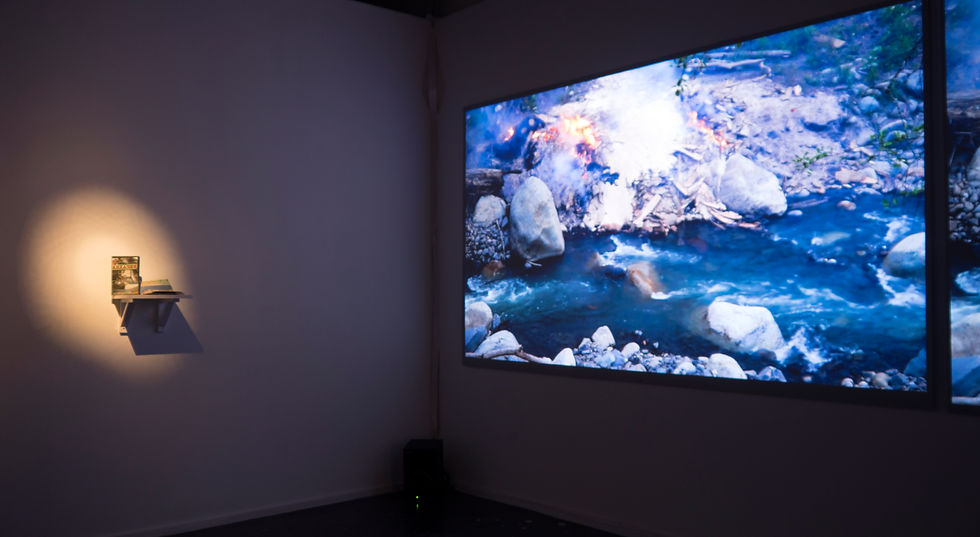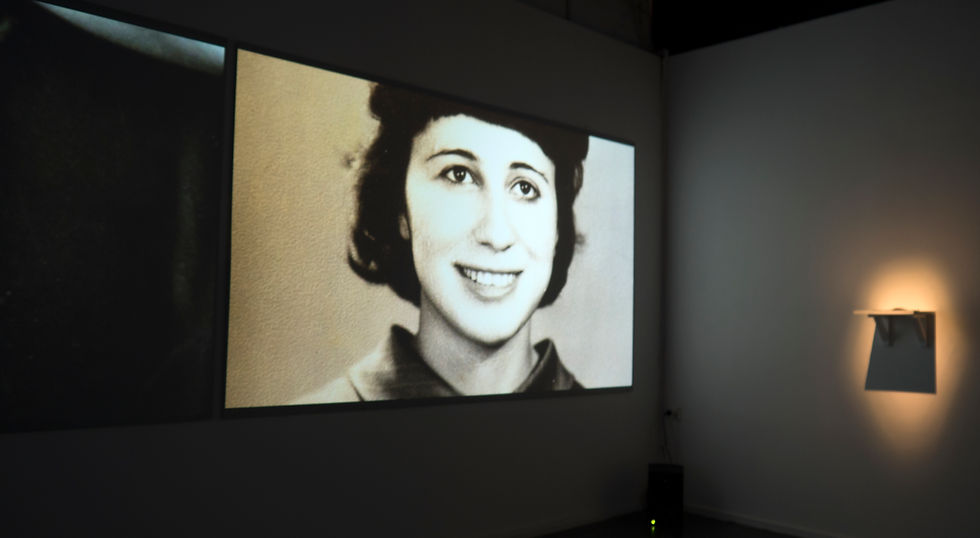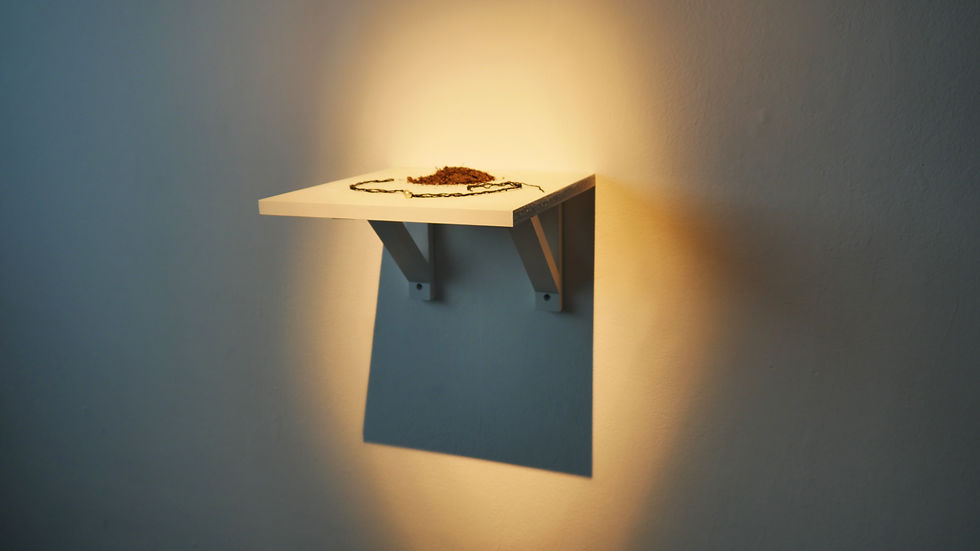The Sokhumi Elegies (2017)
3-Channel HD Video with Sound, 66:00
The Sokhumi Elegies is a three-channel video installation which examines the memory and legacy of the War in Abkhazia, a relatively unknown but brutal conflict which occurred between 1992 and 1993 in the north-west corner of the Republic of Georgia, bordering Russia on the Black Sea coast. After the victory of the ethnic Abkhaz, the area was declared as the separatist Republic of Abkhazia and to this day it remains isolated and internationally unrecognized, with reconciliation and resolution to the conflict being virtually non-existent. A collaboration with Georgian refugees who survived the war and the horrific campaign of ethnic cleansing that followed, the work attempts to explore dreamlike personal narratives, in and around conflicting historical information, towards a series of uncertain elegies. Georgian people, particularly the quarter of a million that were driven from there, are still disallowed to enter Abkhazia because of the ongoing diplomatic stalemate, and thus the work concerns a series of trips made there in 2015 by the artist to document what had become of their former homeland - particularly the capital, Sokhumi.
Visiting the former houses of friends variously occupied or destroyed, and sites significant to their lives and to the timeline of the war, the work is centred around testimonial narration, story-telling and poetry as a collaborative exercise of vision and text. Shalva Bakuradze, a celebrated Georgian poet and literary figure who survived heavy fighting as a young soldier during the war, recounts memories, reflections and personal mythologies concerning these times, including a reflection on the artist’s journey to his former home in Sokhumi. A testimony by the Georgian artist Ketevani is also featured, also concerning her reflections on viewing the images of her former family home, and her return 22 years later to the remote Georgian province of Svaneti, high in the Caucasus mountains bordering Abkhazia, where as a 9-year-old she and her family and many tens of thousands of others were forced to walk in mass exodus in the wake of the ethnic cleansing campaign carried out by the Abkhaz victors.
Georgian musician Temo Ezugbaia, also known as Vinda Folio, provides a testimonial of his experience as a refugee of the first generation after the war. In also reflecting on the experience of viewing the images taken by the artist of his former family home, burnt out and abandoned, Uzugbaia provides insight into the environment of post-war nationalism and bitterness in all its toxicity that pervades his homeland and the region to the present day. Also featured is documentation of the coastal resort town of Gagra, and the small abandoned village of Kamani, both places in which by several unconfirmed accounts unimaginably horrific events occurred. Like much in the war up until the present day, the events which allegedly occurred at these two locations are tragedies for which no truth, justice or reconciliation has been properly sought or achieved.
Sculptural elements are also featured, including a guidebook found in Australia from the early ‘80s recounting Abkhazia’s beauty before the destruction by the war, various media collected from markets in Sokhumi, and some soil collected in the gardens of Bakuradze’s former home in Sokhumi, now occupied by an Abkhaz family who took possession of it when he and his family were driven out. This soil, on being gifted to Bakuradze on the artist’s return to Georgia, was then distributed amongst his community of friends exiled from Sokhumi, who then fashioned a series of necklaces containing trace amounts of it, as a kind of energetic and spiritual connection to their homeland in exile. One such necklace, also gifted to the artist, is featured.
Mythic and universal themes such as loss, nostalgia, love and the psychopathology of exile are explored and framed around the experience of the war and its aftermath. Focusing on tactile and felt experience and the sense of connection to a certain time and place, cinematic footage of modern Abkhazia is complimented with archival photography, field recordings, amateur footage from the war, appropriations of Georgian cinema history, and occasional elements of Abkhaz and Georgian folk music, including a performance by the Abkhazian Pontic musicians Nikolas and Konstantinos Singerov, and some recordings by the Telavi choir of Kakheti made in the early 1980s.
The work evades analysis of the political situation between Georgia, Abkhazia and the world up to the present day in lieu of considering the difficult human experience of political stalemate, and what it as a micro-example can tell us globally and historically about the unending misery of ethnic and sectarian conflict. Tying these elements together into a story about the human dimensions of political failure, the work intends to be an uncertain elegy for the sorrow of war, the misery of exile, and the haunting presence of memory and trauma in situations when truth and justice are absent and continually denied.
Blog:
As an ongoing investigation into the reality of Abkhazia, a photo and text blog project can be found at the address above. The blog, like the beginnings of The Sokhumi Elegies, was originally created as a visual gift to the Georgian friends featured in this work, and was spurred on by the intense emotions towards the subject that these close relationships invoked. It also developed into a gift to all Georgian people in general who might have once held a personal connection to Abkhazia but who because of the ongoing diplomatic stalemate have been denied entry to it these past 24 years. The beaches, towns, villages and mountains of Abkhazia exist for many Georgian people as a numinous memory, a possible island, a dreaming of place and presence. The blog developed into a writing project also, mostly as an on-going research journal, detailing the artist’s personal, political and psychogeographic investigation into the Abkhazia of today, and the many ghosts that haunt its present.











